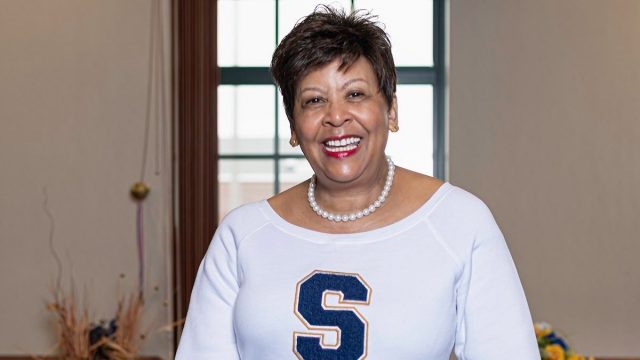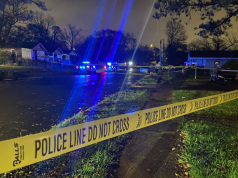
By Alabama NewsCenter Staff
Culture is defined by its leadership. At Stillman College, Cynthia Warrick is the “rudder,” so to speak, in setting the course for the students and staff, alumni and others.
As the seventh president of Stillman and the first female president, Warrick’s vision has changed the path of the college.
“I have the opportunity to put in place a vision that will move the college from survival mode to a transformation into an institution that is sustainable throughout the 21st century,” Warrick said.
She daily proves this statement, setting a stage that will have an impact on the entire college for generations to come.
Stillman has received a grant from Alabama Power and Southern Company to provide technology and dual-enrollment opportunities for high school students in three Black Belt school districts. This grant extends an existing U.S. Department of Agriculture telehealth grant and places state-of-the-art distance-learning equipment in the school districts connected with Stillman to provide courses in science, technology, engineering and mathematics (STEM), cybersecurity and ACT preparation.
“COVID-19 has made a significant impact on higher education and demonstrated that flexibility and change is needed,” Warrick said. “The use of technology is critical to sustainability.”
The pandemic has shown that dependence on traditional sources of revenue, including tuition and fees, is not sustainable for future growth and success. Warrick’s vision embraces technology and seeks to create public-private partnerships for economic development that benefit Stillman and west Tuscaloosa.
She said “providing everyone a seat at the table” and involving them in decision-making will help improve lives and quality of life, so that all people can succeed.
Historically Black colleges and universities like Stillman brought people from slavery to be entrepreneurs, community leaders, educators, health care professionals, engineers, builders and other successful Americans. The impact has included creating more opportunities for students of color and for students from marginalized backgrounds and environments, positively affecting not only the students but entire families and communities.
“We need everyone’s intellectual capital to solve today’s problems … to ensure a better tomorrow,” Warrick said.
“Stillman looks for opportunities to expose students to business and cultural opportunities. We want professional development partnerships to enhance our students’ communications and soft skills,” Warrick said.
As an accredited institution, Stillman is required to have a Quality Enhancement Plan (QEP). Stillman’s QEP focuses on intergenerational communication.
“We want to ensure that our graduates are able to communicate effectively across the five generations in the workplace,” Warrick said.

Warrick seeks to make Stillman a place of community that partners with others, including businesses, schools, nonprofit and community organizations, and local and state governments.
“We want to be a service to west Tuscaloosa and provide educational and recreational programs for youth and the elderly,” she said.
As Stillman grows and creates more opportunities for its students and the community, the vision Warrick is working to put in place is building a legacy designed to stand the test of time.
“The major lesson I have learned throughout my career is not to focus on what I want, but to focus on what my organization, students and community need to be successful. Their success makes me successful,” Warrick said.
“My legacy is the development of future leaders who take the baton and carry on the work that I’ve started,” she said. “I have had the opportunity to make a difference in so many young people’s lives, and those professionals are now serving their families and communities. That legacy keeps on giving.”
Power Moves, an ongoing series by Alabama NewsCenter, celebrates the contributions of multicultural leaders in Alabama. Visit AlabamaNewsCenter.com throughout the year for inspiring stories of those working to elevate the state.



